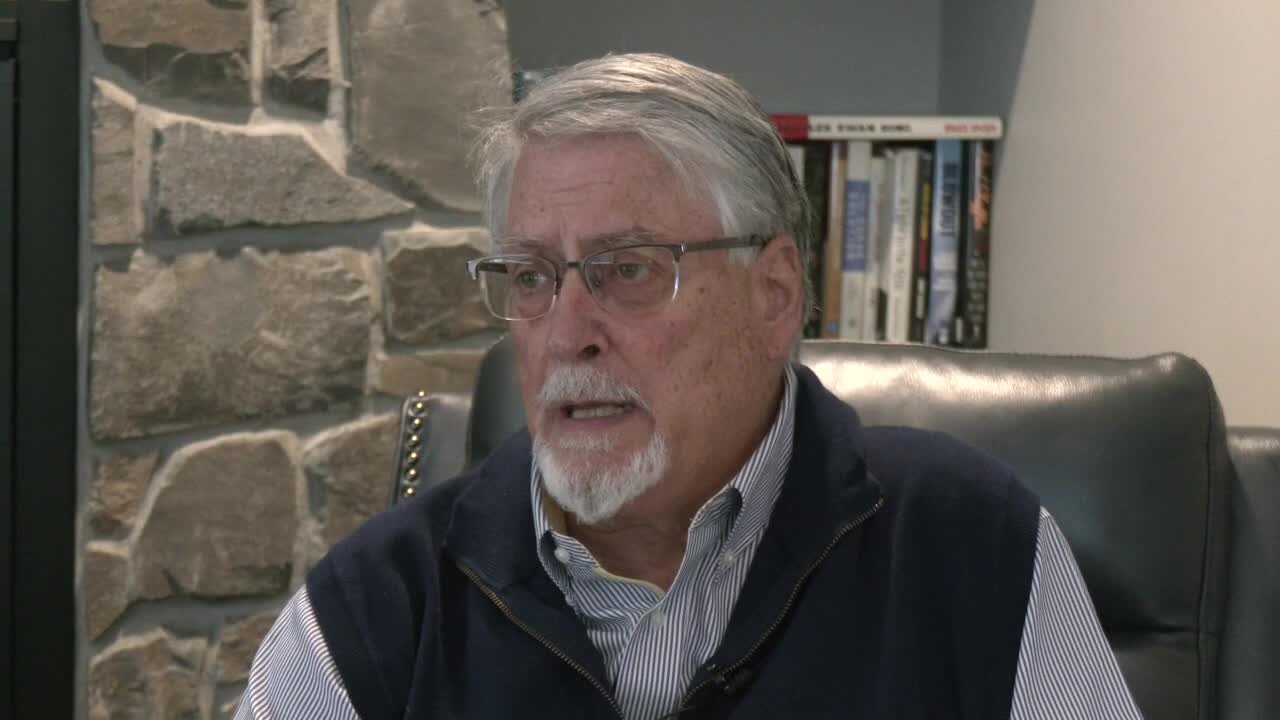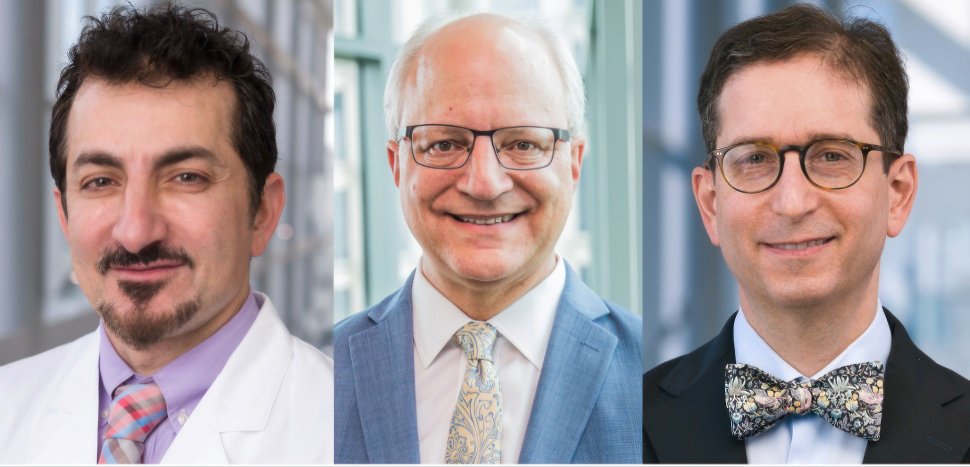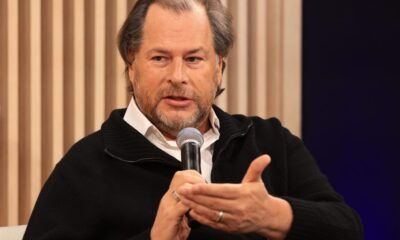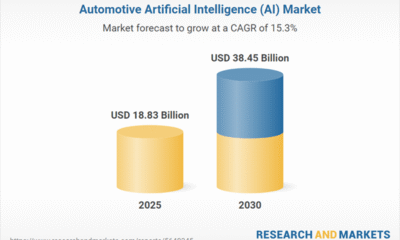AI Research
Yann LeCun education qualifications: How an NYU professor rose to become VP and Chief AI Scientist at Meta

When students today hear the name Yann LeCun, it is often spoken in the same breath as modern artificial intelligence itself. As Vice President and Chief AI Scientist at Meta, he is celebrated as one of the founding fathers of deep learning. Yet, his journey is more than a series of breakthroughs in machine learning, it is a story of relentless curiosity, mentorship, and institution-building that spans decades and continents. For students navigating the world of AI, LeCun’s path is a masterclass in how dedication to research and teaching can ripple out to shape global technology. From early experiments with neural networks to creating platforms that define the future of AI, his career is a living lesson in blending theory, application, and vision.
Early academic roots: A postdoc in Geoff Hinton’s lab
LeCun’s defining academic journey began in 1987 at the University of Toronto, where he joined as a postdoctoral researcher under Geoff Hinton, a pioneer in neural networks. This period was formative: it merged mathematics, neuroscience, and engineering into a cohesive vision for AI. The lessons learned during that year would anchor his future contributions to both research and industry.
Research years at Bell Labs and AT&T
From 1988, LeCun embarked on an eight-year tenure at AT&T Bell Laboratories, one of the most prestigious research hubs of the era. Working on machine learning, neural networks, handwriting recognition, and optical character recognition, he navigated the delicate balance between applied challenges and fundamental theory. By 1996, he became Department Head at AT&T Labs Research, leading the Image Processing Research Department. Projects under his guidance explored pattern recognition, image compression, and video processing — all while collaborating with future AI luminaries like Yoshua Bengio and Vladimir Vapnik. This period cemented his reputation as a researcher who could bridge deep theory with real-world impact.
Transition to academia: Building NYU’s data science legacy
In 2003, LeCun shifted firmly into academia, joining New York University. Over the next two decades, he held multiple roles: Silver Professor of Computer Science, Professor of Neural Science, Professor of Electrical and Computer Engineering, and Professor of Data Science. His crowning achievement at NYU came in 2013, when he became the Founding Director of the Center for Data Science. Here, he established an institutional platform for interdisciplinary AI research, ensuring that generations of students could bridge theory and practice. His teaching spans machine learning, computer vision, robotics, computational neuroscience, and data-driven science — a blend of disciplines that reflects the holistic nature of modern AI.
Industry impact: Founding Facebook AI Research
While his academic reputation grew, LeCun also made waves in industry. In 2013, he became Director of AI Research at Facebook, launching Facebook AI Research (FAIR) with labs in Menlo Park, New York City, and Paris. Under his guidance, FAIR quickly became a global benchmark in computer vision, deep learning, and natural language processing. In 2018, he was named Vice President and Chief AI Scientist at Meta, a role he continues to hold. Today, he shapes AI strategy, oversees long-term R&D, and balances this with his professorship at NYU — a rare combination of industry leadership and academic influence.
Entrepreneurial ventures: Beyond academia and big tech
LeCun’s curiosity extends beyond research and teaching. He has co-founded ventures such as MuseAmi, a company developing AI-driven music and entertainment software, and continues to advise Element Inc., focused on biometric authentication. These ventures highlight his commitment to applying machine learning across diverse real-world domains.
Lessons from a life in AI
Yann LeCun’s journey is a reminder that innovation does not happen in isolation. From postdoc labs in Toronto to leading AI strategy at Meta, his career blends research, teaching, and entrepreneurship in a way that sets a standard for students and professionals alike. It underscores the importance of curiosity, interdisciplinary thinking, and building institutions that endure beyond individual achievements. For those stepping into AI or any field of study, the lesson is clear: Foundational knowledge, coupled with vision and perseverance, can shape not just a career — but the future of an entire discipline.TOI Education is on WhatsApp now. Follow us here.
AI Research
Artificial intelligence investing is on the rise since 2013

FARGO, N.D. (KVRR) — “Artificial intelligence is one of the big new waves in the economy. Right now they say that artificial intelligence is worth about $750 billion in our economy right now. But they expect it to quadruple within about eight or nine years,” said Paul Meyers, President and Financial Advisor at Legacy Wealth Management in Fargo.
According to a Stanford study, since 2013, the United States has been the leading global AI private investor. In 2024, the U.S. invested $109.1 billion in AI. While on a global scale, the corporate AI investment reached $252.3 billion.
“Artificial intelligence is already in our daily lives. And I think it’s just going to become a bigger and bigger part of it. I think we still have control over it. That’s a good thing. But artificial intelligence is helpful to all of us, regardless of what industry you’re in, and we need to be ready for it,” said Meyers.
Recently, Applied Digital has seen a dip in its stock by nearly 4%. The company’s 50-day average price is $12.49, and its 200-day moving average price is $9.07. Their latest report in July reported their earnings per share being $0.12 for the quarter.
“This company has grown quite a bit as a stock this year. For investors in this company, they’re up ninety-four percent this year. And I would say that you know there’s some positives and some negatives, some causes for concern, and some causes for optimism, it’s not a slam dunk,” said Meyers.
At the city council meeting on Tuesday night, Don Flaherty, Mayor of Ellendale, shared that they had not received any financial benefits from Applied Digital and won’t see any until 2026. While Harwood has yet to finalize their decision on the proposal.
AI Research
News Brief | Artificial Intelligence systems are thirsty
||| FROM SCIENCE ALERT |||
“AI chugs a bottle of water every time you chat with it.”
Originally reported by Science Alert
“Many people assume AI is inherently harmful, especially given headlines calling out its vast energy and water footprint. Those effects are real, but they’re only part of the story.”
**If you are reading theOrcasonian for free, thank your fellow islanders. If you would like to support theOrcasonian CLICK HERE to set your modestly-priced, voluntary subscription. Otherwise, no worries; we’re happy to share with you.**
AI Research
NIH Taps UT Southwestern Medical Center for $23M North Texas Alzheimer’s Disease Research Hub » Dallas Innovates

The leadership team for UT Southwestern’s new North Texas Alzheimer’s Disease Research Center includes principal investigator Dr. Ihab Hajjar (left), O’Donnell Brain Institute director Dr. William Dauer, and neurology chair Dr. Elan Louis. Their work will push the frontier of dementia research, as well as support community outreach and training for caregivers. [Photos: UT Southwestern Medical Center]
North Texas is the newest federal front line in the fight against Alzheimer’s and dementia.
The National Institute of Health has awarded UT Southwestern a $23 million, five-year grant from the National Institute on Aging to establish the North Texas Alzheimer’s Disease Research Center (ADRC). The designation makes it one of 37 such centers nationwide and the second in Texas, according to an announcement.
The new center, based at UT Southwestern Medical Center, will be a focal point for research that could reset how the disease is detected and treated. Scientists plan to probe how cardiometabolic conditions like high blood pressure accelerate dementia, train AI to hear vocal cues of cognitive decline, and build digital replicas of patients to test therapies.
Texas by the numbers
Texas, which is the nation’s second most populous state, has the third-highest number of Alzheimer’s patients, the second-highest Alzheimer’s-related deaths, and the highest dementia burden score, according to UTSW. The dementia burden score is a measure of the emotional and psychological toll on caregivers.
That reality, paired with UT Southwestern’s long-standing strength in neurology and its Peter O’Donnell Jr. Brain Institute, laid the groundwork for the designation.
Tackling cardiometabolic factors in dementia and more
Each Alzheimer’s Disease Research Center operates with a unique theme. In North Texas, the focus will be on advancing the national agenda by exploring how cardiometabolic factors, especially hypertension, contribute to Alzheimer’s and related dementias. Hypertension affects nearly 120 million Americans, according to UTSW.
The center also plans to use AI voice analysis to discover vocal changes that accompany cognitive decline. Researchers will develop “digital twin” technology to create virtual representations of patients, which will help distinguish between factors associated with normal aging and those linked to dementias, according to Dr. Ihab Hajjar, principal investigator of the new center.
“Being named an ADRC is not only an indication of scientific excellence, but also highlights an intentional commitment to research Alzheimer’s disease and cognitive impairment in our community,” said Hajjar, who is professor of neurology and internal medicine at UT Southwestern, in a statement.
Hajjar said the designation gives North Texas “the chance to make an unprecedented leap in understanding and treating Alzheimer’s disease and related dementias.”

Dr. Ihab Haijar [Photo: UT Southwestern Medical Center]
North Texas collaboration in the dementia fight
The designation is designed in collaboration with UT Dallas and UT Arlington.
The North Texas ADRC will not only enable new science but also “enhance scientific and clinical collaborations locally and nationally” while creating education opportunities for researchers, clinicians, and learners, according to UTSW.
Dr. William T. Dauer, director of the Peter O’Donnell Jr. Brain Institute, points to the new designation as proof of what can happen when institutions combine their strengths.
“This designation reflects the power of bringing together outstanding scientists, clinicians, and community partners to tackle one of the most urgent societal challenges,” Dauer said in the announcement. “It will strengthen our ability to link discoveries from O’Donnell Brain Institute laboratories with the needs of patients and families in North Texas and beyond, accelerating progress against Alzheimer’s disease and related dementias.”
Dr. Elan D. Louis, chair and professor of neurology and an investigator in the O’Donnell Brain Institute, noted that the ADRC reflects momentum already underway across his department.
“Our new ADRC reflects a growing emphasis in the Department of Neurology on learning about, understanding, and treating a group of disorders that affect millions of elderly people nationwide,” Louis said.
Feeding a national data engine for dementia research
The research generated by all ADRCs will feed into communal datasets that are made publicly available to spur collaboration and speed discovery. Hajjar said those shared efforts could offer “hope to patients with dementia and their loved ones.”
Dementia research is a core area within UTSW, and the new center builds on a decade of work by the O’Donnell Brain Institute.
UTSW also notes its No. 9 ranking for Neurology & Neurosurgery on U.S. News & World Report’s Best Hospitals list and 12 nationally ranked specialties, the most of any hospital in Texas. To date, its faculty have received six Nobel Prizes and include 24 members of the National Academy of Sciences, 23 members of the National Academy of Medicine, and 13 Howard Hughes Medical Institute Investigators.
Leadership brings specialized expertise
UTSW said the center’s leadership team brings long-standing expertise in neurological research with distinct but complementary focuses. Dr. Dauer holds the Lois C.A. and Darwin E. Smith Distinguished Chair in Neurological Mobility Research. Dr. Hajjar holds the Pogue Family Distinguished University Chair in Alzheimer’s Disease Clinical Research and Care, in Memory of Maurine and David Weigers McMullan. Dr. Louis holds the Linda and Mitch Hart Distinguished Chair in Neurology.
The ADRCs were established in 1984 as congressionally designated NIH Centers of Excellence. The mission includes improving detection, diagnosis, treatment, prevention, and care for patients and families. Each center tailors its theme to local populations and scientific priorities.
The North Texas center joins another Texas ADRC, a collaboration between UT Health San Antonio and The University of Texas Rio Grande Valley designated in 2021, strengthening the state’s role in national dementia research efforts.
Don’t miss what’s next. Subscribe to Dallas Innovates.
Track Dallas-Fort Worth’s business and innovation landscape with our curated news in your inbox Tuesday-Thursday.
-

 Business5 days ago
Business5 days agoThe Guardian view on Trump and the Fed: independence is no substitute for accountability | Editorial
-
Tools & Platforms3 weeks ago
Building Trust in Military AI Starts with Opening the Black Box – War on the Rocks
-

 Ethics & Policy1 month ago
Ethics & Policy1 month agoSDAIA Supports Saudi Arabia’s Leadership in Shaping Global AI Ethics, Policy, and Research – وكالة الأنباء السعودية
-

 Events & Conferences4 months ago
Events & Conferences4 months agoJourney to 1000 models: Scaling Instagram’s recommendation system
-

 Jobs & Careers2 months ago
Jobs & Careers2 months agoMumbai-based Perplexity Alternative Has 60k+ Users Without Funding
-

 Education2 months ago
Education2 months agoVEX Robotics launches AI-powered classroom robotics system
-

 Funding & Business2 months ago
Funding & Business2 months agoKayak and Expedia race to build AI travel agents that turn social posts into itineraries
-

 Podcasts & Talks2 months ago
Podcasts & Talks2 months agoHappy 4th of July! 🎆 Made with Veo 3 in Gemini
-

 Podcasts & Talks2 months ago
Podcasts & Talks2 months agoOpenAI 🤝 @teamganassi
-

 Education2 months ago
Education2 months agoAERDF highlights the latest PreK-12 discoveries and inventions






















![Organoids without blood vessels can't grow larger than sesame seeds—about 3 millimeters—before dying from lack of oxygen and nutrients. UNT and Stanford researchers say they've solved this problem. Seeds pictured above are not to scale. [Image: Pinchai Puntong/istockphoto]](https://aistoriz.com/wp-content/uploads/2025/09/Sesame-Seed-organoid-science-iStock-1487667097-970x464.jpg)

